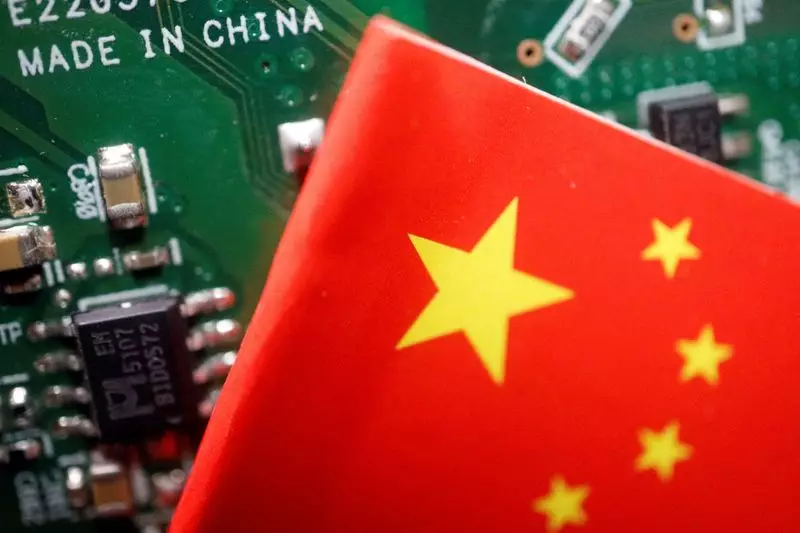The Chinese semiconductor industry is once again caught in the crosshairs of U.S. trade policy as Washington imposes fresh export controls aimed at curtailing the country’s technological advancements. As seen in past events, these restrictions target critical components vital for chip manufacturing, creating ripples throughout the sector. This article analyses the current situation following the latest U.S. measures, the response from Chinese firms, and the implications for the global semiconductor landscape.
The U.S. government’s newly introduced export controls mark its third round of crackdowns on China’s booming chip industry in just three years. The measures primarily focus on chipmaking equipment and high-bandwidth memory, affecting approximately 140 companies, including significant players like Naura Technology Group and ACM Research. These restrictions have the dual purpose of hindering China’s ability to produce advanced chips and ensuring that the country does not utilize these technologies for military ends.
Despite the severity of these actions, several Chinese chip firms have publicly committed to accelerating their localization efforts in response to the new limitations. For instance, Empyrean has stated that it will focus on enhancing its domestic production capabilities for electronic design automation (EDA) tools, declaring that inclusion on the U.S. list will minimally impact its operations. The overall sentiment in the Chinese chip sector appears to be one of resilience, as companies report having built stockpiles of essential equipment.
While U.S. restrictions have shaken the industry, many Chinese companies appear unfazed. Jiangsu Nata Opto-Electronic Material has indicated plans to substitute materials with local alternatives, showing adaptability amidst uncertainty. Additionally, businesses such as Beijing Huafeng Test & Control Technology have reported achieving full localization of their supply chains, which may alleviate some of the strain caused by U.S. policies.
However, the generalized optimism may not fully encapsulate the reality facing the sector. Experts believe that focusing on localization will not cover the technological gap that China has with its foreign counterparts, especially when it comes to cutting-edge manufacturing equipment. Considerable portions of the Chinese semiconductor industry still rely on critical imports for tech advancements, suggesting that while immediate disruptions may be manageable, long-term challenges remain.
The immediate response from financial markets was surprisingly muted, as shares in chip-making stocks showed a slight upward trend despite the escalating tensions. Analysts speculate that the new U.S. measures are less stringent compared to earlier regulations, allowing some firms to continue thriving even under restrictions. However, Jefferies analysts predict that these curbs could lead to a $10 billion drop in capital expenditure for the Chinese chip sector next year, representing around a 30% decline year-on-year.
Moreover, Chinese firms have ramped up equipment imports from foreign manufacturers ahead of the anticipated restrictions. A significant 33% increase in semiconductor equipment imports in the first nine months of the current year, totaling $24.12 billion, indicates an ongoing effort to stockpile resources before potential disruptions could take effect.
One noteworthy aspect of the latest sanctions is the surprising exclusion of ChangXin Memory Technologies (CXMT), a pivotal player in the AI chip arena. This exclusion presents an unexpected lifeline for the Chinese semiconductor sector and South Korean manufacturers who depend on CXMT for their revenue. The Biden administration’s insistence on limiting China’s access to advanced chips, particularly those with military applications, raises complex questions on how these restrictions are strategically applied.
The slight rebound of shares in South Korean equipment suppliers to CXMT post-exclusion emphasizes the interconnectedness of global semiconductor supply chains. This situation has alleviated immediate fears regarding revenue loss for South Korean firms—an indication that while tensions persist, there are moments of reprieve in this fraught landscape.
The U.S. export controls represent a significant hurdle for the Chinese semiconductor industry, compelling firms to reevaluate their strategies and prioritize domestic supply chain localization. While many companies adapt effectively to these challenges, the looming question remains—can they bridge the technological gap that U.S. sanctions continue to widen? The situation is fluid, and as the landscape evolves, stakeholders in the global semiconductor domain must remain vigilant to navigate potential disruptions and seize ongoing opportunities.

